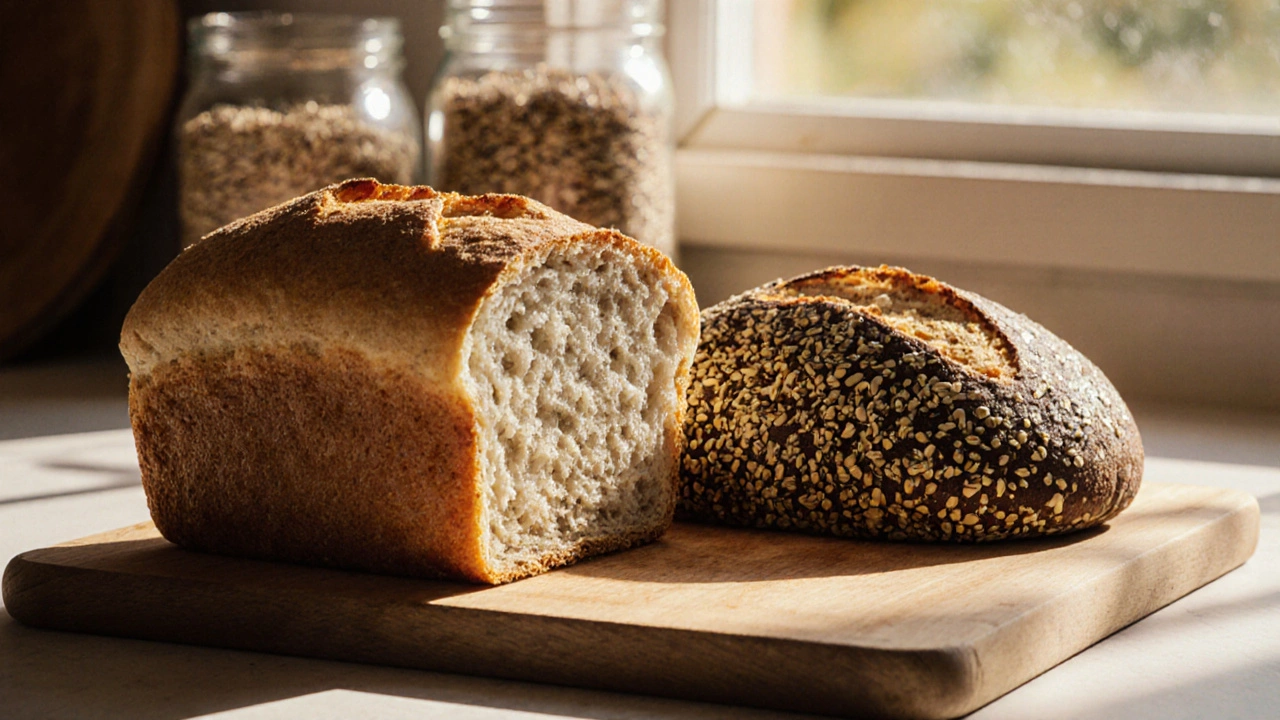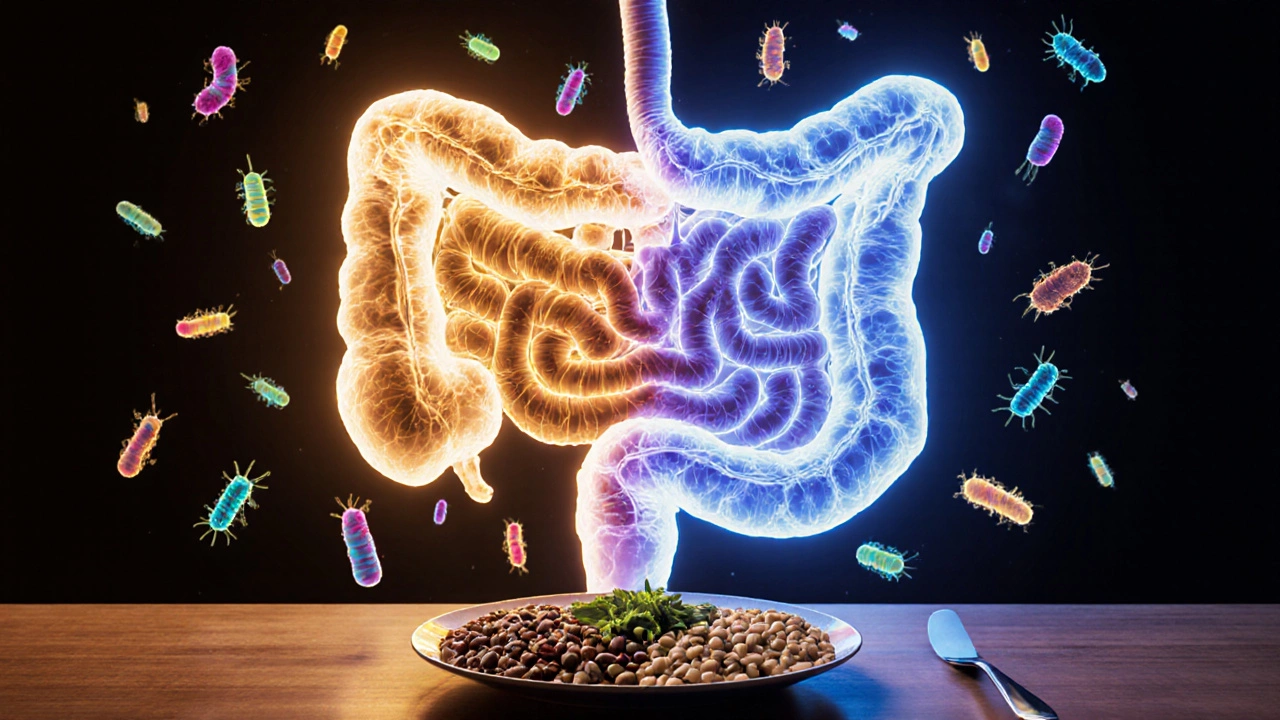
Gluten-Free Symptom Tracker
Track Your Progress
Monitor how your body responds to a gluten-free diet. This tool helps visualize symptom changes over time based on your input.
Progress Summary
Week 1Enter your baseline symptoms to see your progress.
Curious about what actually happens when you stop eating gluten? You’re not alone-millions have swapped wheat‑based foods for gluten‑free alternatives, but the bodily response can be surprising. In this guide we break down the science, the short‑term buzz, and the long‑term health picture, so you know exactly what to expect.
What is Gluten?
When people talk about gluten, they’re referring to a family of proteins found in wheat, barley, and rye. Gluten is a composite of gliadin and glutenin that gives dough its elasticity and helps it rise. It’s present in breads, pastas, cereals, and even some sauces.
Why Do People Choose to Stop Eating Gluten?
There are three main reasons people cut gluten out of their meals:
- Celiac disease an autoimmune disorder where gluten triggers intestinal damage.
- Non‑celiac gluten sensitivity a condition causing symptoms like bloating and fatigue without the autoimmune response.
- Personal preference or the belief that a gluten‑free diet can aid weight loss and improve energy.
Understanding the underlying reason is crucial because it shapes how your body will react.
Immediate Changes: The First Few Weeks
Within days to a couple of weeks, many report noticeable shifts:
- Reduced bloating - gliadin can ferment in the gut, producing gas. Removing it often eases abdominal distension.
- More regular bowel movements - especially for those with celiac disease, whose damaged villi start to heal.
- Energy boost - a steadier blood‑sugar curve can happen when refined wheat products are swapped for whole‑food alternatives.
These short‑term effects are sometimes called the “gluten withdrawal” phase, even though it’s not a true withdrawal syndrome like with caffeine.

Long‑Term Health Effects
After 3-6 months, the body settles into a new baseline. Here’s what the research shows:
| Aspect | Before Gluten‑Free | After 6 Months |
|---|---|---|
| Intestinal Villus Height | Shortened (celiac) | Increased by 20‑30% (healing) |
| Inflammatory Markers (CRP) | Elevated | Reduced to normal range |
| Gut Microbiome Diversity | Low | Higher diversity, more beneficial Bifidobacteria |
| Iron & B‑Vitamin Levels | Often low in celiacs | Improved absorption if diet is balanced |
| Weight | Varies | May decrease if processed wheat is replaced with nutrient‑dense foods |
For people without an underlying medical condition, the benefits are often subtler. Some experience clearer skin, while others notice no major change.
Potential Downsides of a Gluten‑Free Lifestyle
Going gluten‑free isn’t a free pass to eat anything. Common pitfalls include:
- Fiber deficit - many whole‑grain wheat products are rich in soluble fiber. Replacing them with low‑fiber gluten‑free breads can affect bowel health.
- Nutrient gaps - gluten‑free processed foods are sometimes fortified with fewer vitamins (iron, folate, B vitamins) than their wheat counterparts.
- Higher cost - specialty flours and mixes often cost 2‑3× more than regular flour.
- Hidden gluten - sauces, soups, and even cosmetics can contain trace gluten, leading to accidental exposure.
Mitigating these drawbacks means planning meals, reading labels, and including naturally gluten‑free whole foods like quinoa, buckwheat, and legumes.

Managing a Gluten‑Free Diet Effectively
Here’s a quick checklist to keep your new diet balanced and enjoyable:
- Stock whole‑food staples: quinoa, brown rice, sweet potatoes, nuts, seeds, and fresh vegetables.
- Read every ingredient list. Look for "contains wheat, barley, rye" or hidden terms like maltodextrin derived from wheat.
- Include a fortified gluten‑free grain (e.g., gluten‑free oats) to boost B‑vitamins and iron.
- Consider a daily multivitamin if you suspect gaps, especially iron and folate for celiac patients.
- Experiment with homemade gluten‑free baking using blends of rice flour, tapioca starch, and xanthan gum for structure.
Remember, a well‑planned gluten‑free diet can be just as nutritious as a traditional one.
Frequently Asked Questions
Will I lose weight just by cutting gluten?
Weight loss isn’t guaranteed. If you replace high‑calorie wheat products with healthier alternatives, you may lose weight. But swapping to gluten‑free junk foods can keep or even increase your calorie intake.
How long does it take for intestinal damage to heal?
For most adults with celiac disease, noticeable villus regeneration occurs within 3‑6 months of strict gluten avoidance. Full healing may take up to two years for some.
Can I test my body’s response to gluten on my own?
A supervised elimination diet-typically 2-4 weeks without gluten, followed by a re‑introduction-helps identify sensitivity. Always do this under medical guidance if you suspect celiac disease.
Is a gluten‑free diet safe for athletes?
Yes, provided the athlete ensures adequate carbohydrate intake from gluten‑free sources like potatoes, rice, and oats, and monitors micronutrient levels.
What are hidden sources of gluten I should watch out for?
Soy sauce, malt vinegar, some processed meats, and even certain medications can contain wheat‑derived ingredients. Always check the label or contact the manufacturer.
Whether you’re managing a medical condition or simply curious, knowing how your body reacts to a gluten‑free lifestyle empowers you to make smarter food choices. Stay attentive, keep your meals varied, and enjoy the benefits of a diet that works for you.